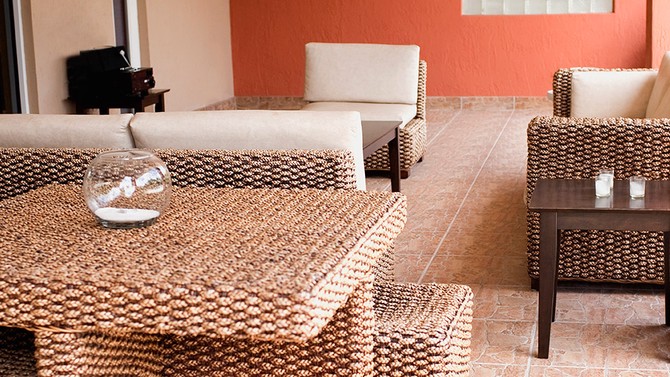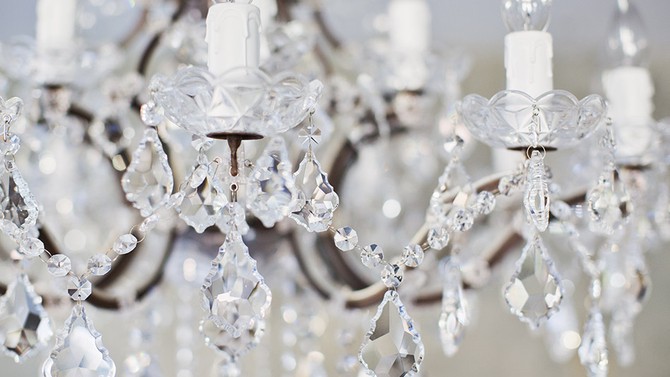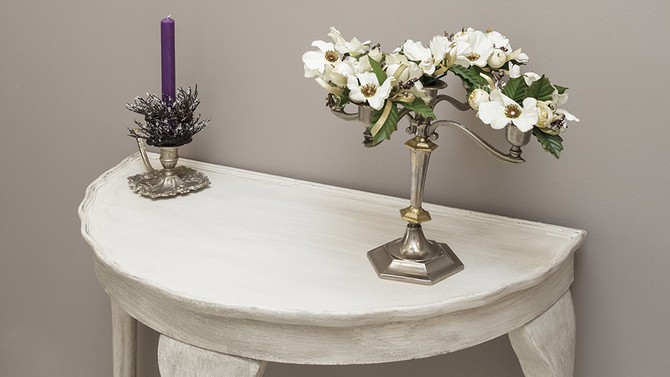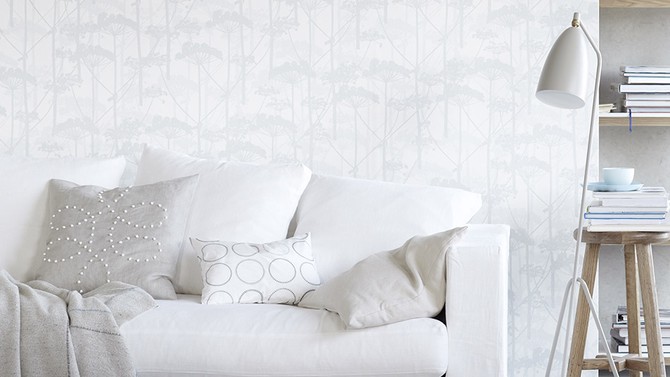The Paint Mistake Everyone Falls For (Plus 5 More to Avoid)
Two interior designers explain a few blunders that are easily fixed—from a typical first-timer's goof to an error even seasoned pros occasionally make.
By Libby Follis and Drew Ebbing

Photo: Tim Hall/Photodisc/Getty Images
Mistake #1: Choosing Paint First
Reason why people do it: First-time home owners often make this mistake, in part, because paint provides (almost) instant gratification and a sense of accomplishment—you've picked a color from a bazillion chips, gotten it on the largest surface in the room and put the messiest task behind you.
Reason why it's a mistake: You might pick up a fabric featuring a gray background with a pink cast you don't even notice—until you put it against your gray wall and discover its own beige-y-ness.
What to do instead: Start with a game plan—not just a color palette, but specific materials and floor coverings.
One extra tip to keep in mind: After you've got your fabrics, shop for large wallpaper samples (called "memos") in the colors you're considering and tape them up, using blue painter tape on the reverse (it won't harm the walls). You can then have a paint store match that hue.

Photo: GlowDecor/Glow/Getty Images
Mistake #2: Starting with a "Suite" of Furniture
Reason why people do it: Many companies produce a large portion of their collections in darker wood tones, plus hand-me-down chests, tables and dressers can add to the brown palette.
Reason why it's a mistake: A room filled with brown furniture, dark leather or fabrics, stained hardwood floors, doors and/or moldings will make the space feel smaller and weigh a room down.
What to do instead: These days, the trend is toward mix of wood pieces and different finishes that add depth and texture, like mirrored, stone, even raffia. Check Priley Lane for a selection of linen or grasscloth-painted furniture and Somerset Bay Home for fresh and colorful interpretations of classic styles.
One extra tip to keep in mind: If you happen to own a mahogany or walnut bedroom or dining set (thanks, Nana), you'll want to paint one or two pieces with an oil-based color (it'll minimize brush marks better than acrylic) or move a couple of items elsewhere in the house.

Photo: Martin Barraud/OJO+/Getty Images
Mistake #3: Picking the Prettiest Chandelier
Reason why people do it: Lighting stores often have high ceilings and tons of inventory—a combination that can fool the eye.
Reason why it's a mistake: The "Too's"—a fixture turns out to be either too big for the table, too small for your room, or hung too high or too low.
What to do instead: A handy rule of thumb for choosing a dining room chandelier: Add the room's length and width in feet and convert to inches, so a 12-by-15-foot room would give you 27 feet, which means the diameter of your chandelier should be approximately 27 inches.
One extra tip to keep in mind: A chandelier should be hung 30 to 36 inches above the table.

Photo: KatarzynaBialasierricz/iStock/360 /Thinkstock
Mistake #4: Focusing Most of Your Time and Money on the Living Room
Reason why people do it: The living room is where all the important things happen, where guests are entertained and relatives cram in for the holidays.
Reason why it's a mistake: It's empty about 90 percent of the time, if you also have a family room, which means a large chunk of a decorating budget is in the room that's used the least.
What to do instead: Shift some of your dollars into the foyer. It's often an afterthought, but it provides a nice welcome home for you (as well as holiday guests).
One extra tip to keep in mind: A demilune or half-round table—ideal to navigate around—is a go-to piece in a high-traffic area like this. Choose one with a drawer to hide mail and keys, add a pretty lamp, votive candles and a vase with cut flowers.

Photo: Subinpumsom/iStock/360/Getty Images
Mistake #5: Forgetting the 18-Inch Margin
Reason why people do it: People want to make a rug they already own work in a different space, or they fall in love with the color or pattern of a new one without first considering its size.
Reason why it's a mistake: A too-large rug will make a room feel even more cramped. Too small? The furniture starts to feel as if it's floating higgly-piggly in the space.
What to do instead: In a large space, you want 15 to 20 inches between the rug edge and the wall. In a smaller room, leave an 8- to 14-inch perimeter. (All four legs of the seating furniture should be on the rug, unless the sofa is against a wall).
One extra tip to keep in mind: In a good-sized room, the ideal margin is 18 inches; to get a custom-looking rug without killing your budget, have a piece of carpet cut to the dimensions you need and bind the edges with a matching wool or nylon yarn.

Photo: Janne Peters/Picture Press/Getty Images
Mistake #6: Omitting the Third Source of Light
Reason why people do it: "The overhead lights work just fine," most of us think. (Sometimes even seasoned pros, who've accounted for two light sources, forget a third.)
Reason why it's a mistake: Relying entirely on overhead lights in a bathroom make shaving and putting on makeup difficult. In a dining or living room, it can make parties feel gulag-ish, and you already know the perils of knitting, reading or solving a crossword puzzle without a decent lamp.
What to do instead: Once you've got a ceiling fixture you like, choose a pair of lamps that relate to the closest pieces of furniture (e.g., don't place a thin, low-wattage lamp next to an overstuffed sofa or chair) or add a swing-arm floor or wall-lamp with adjustable wattage next to your favorite place to sit. Now think about decorative lighting options: sconces work beautifully to lighten challenging areas, like alcoves and above sideboards; picture lights not only illuminate art but can also be used over bookcases to show off the pretty book bindings and collectibles that can otherwise get lost.
One extra tip to keep in mind: In a bathroom, it's best to have both overhead and a lighting source at eye level, such as sconces like these on either side of the mirror.
Libby Follis and Drew Ebbing founded Gifted Interiors Ltd in 1988 in Grosse Pointe Farms, Michigan.
Published 06/09/2014

